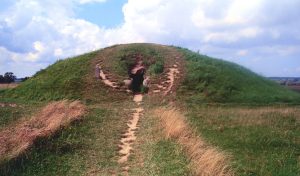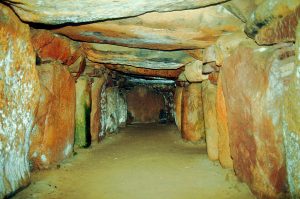Dolmens and Passage Tombs: Europe’s Ancient Burial Megaliths
Across the European landscape, from Ireland to France, one encounters the silent testimony of ancient communities: Dolmens and Passage Tombs. These megalithic structures, built between 4000 BCE and 2500 BCE, were primarily intended as collective burial sites, but their precise alignments and monumental scale hint at a deeper, perhaps ritualistic, purpose.
Dolmens are typically constructed using two or more vertical stones supporting a large horizontal capstone, creating a chamber-like space. Passage tombs, such as Newgrange in Ireland, feature long corridors aligned with the rising sun on solstices or equinoxes. These precise orientations suggest that ancient builders had a sophisticated understanding of astronomy and natural cycles.
Astronomical Alignments and Spiritual Significance
The construction of these tombs was not merely functional; it was symbolic. Many Dolmens and Passage Tombs align with celestial events, suggesting a connection between the living, the dead, and the cosmos. For instance, Newgrange’s inner chamber is illuminated by the sunrise on the winter solstice, a phenomenon that has persisted for over 5,000 years. Such alignments indicate that ancient Europeans were keen observers of the heavens, possibly encoding knowledge of time, seasons, and cosmic cycles into their sacred architecture.
This raises intriguing questions: Were these tombs purely for the dead, or did they serve as ceremonial centers, repositories of knowledge, or even tools to mark long-term astronomical cycles? Could the precision in construction suggest technologies or methods that have since been lost to time due to interruptions in human history, natural disasters, or the burning of ancient libraries?
Dolmens Across Europe: Diversity and Mystery
From Poulnabrone in Ireland to the numerous megalithic tombs in Brittany, France, the variety of Dolmens and Passage Tombs illustrates regional differences in architectural style, materials, and ritual use. Despite this, a unifying theme emerges: massive stones carefully selected and arranged, often without mortar, showcasing both engineering skill and spiritual intent.
Recent discoveries indicate that some of these tombs were reused over centuries, with evidence of secondary burials, offerings, and ritual deposits. This continuity suggests that megalithic knowledge persisted across generations and might have been part of a shared, pan-European culture of burial and ceremonial practice.
Rethinking Ancient Civilization
The complexity, scale, and astronomical sophistication of these tombs challenge the idea that prehistoric societies were “primitive.” The careful planning, alignment, and construction indicate not only architectural ingenuity but also a conceptual understanding of the cosmos. Perhaps some of this knowledge has been partially lost due to cataclysmic events or interruptions in the continuity of human culture, leaving us with enigmatic monuments that continue to inspire awe.
Additional reading:







